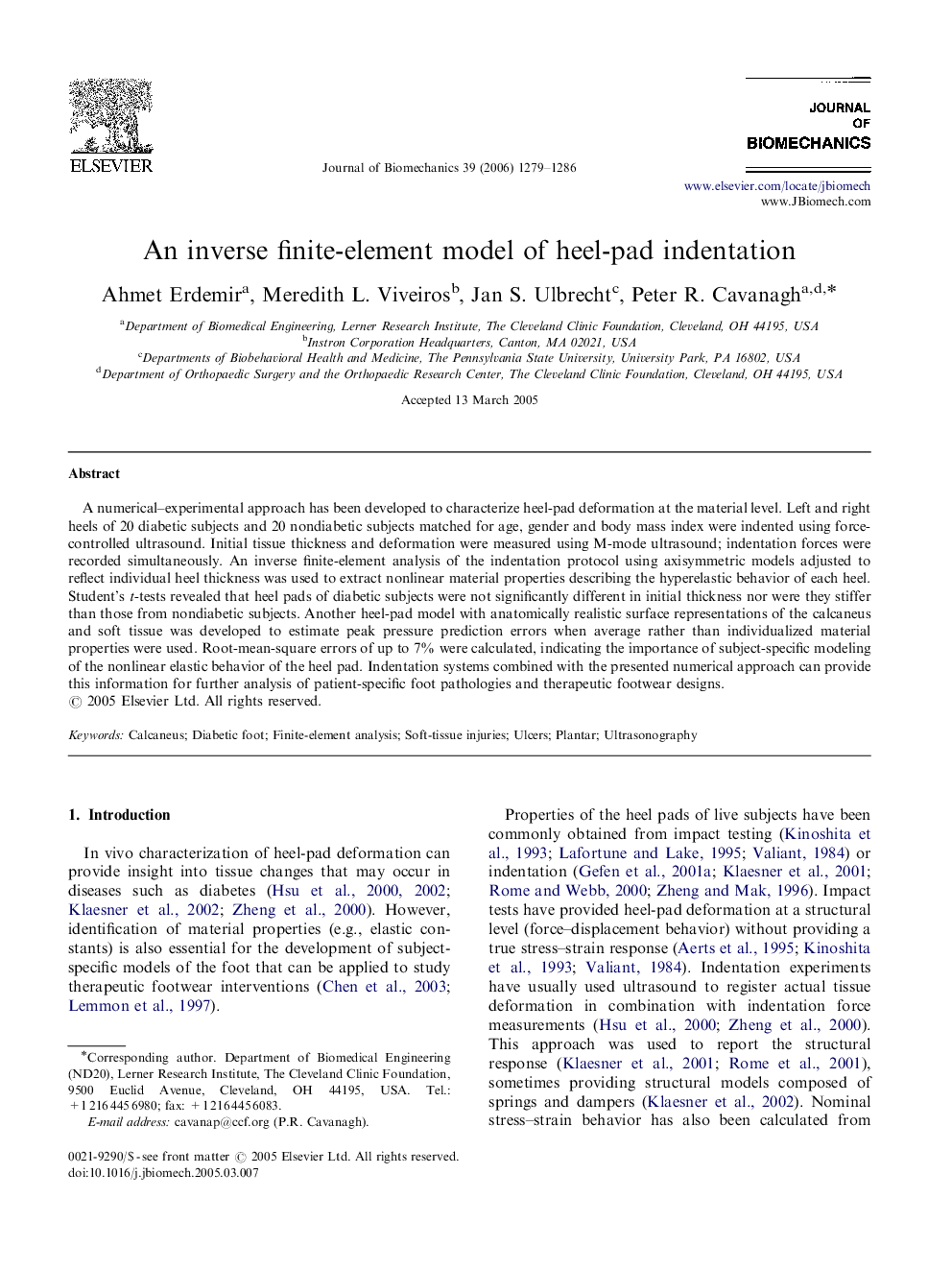| Article ID | Journal | Published Year | Pages | File Type |
|---|---|---|---|---|
| 875114 | Journal of Biomechanics | 2006 | 8 Pages |
A numerical–experimental approach has been developed to characterize heel-pad deformation at the material level. Left and right heels of 20 diabetic subjects and 20 nondiabetic subjects matched for age, gender and body mass index were indented using force-controlled ultrasound. Initial tissue thickness and deformation were measured using M-mode ultrasound; indentation forces were recorded simultaneously. An inverse finite-element analysis of the indentation protocol using axisymmetric models adjusted to reflect individual heel thickness was used to extract nonlinear material properties describing the hyperelastic behavior of each heel. Student's t-tests revealed that heel pads of diabetic subjects were not significantly different in initial thickness nor were they stiffer than those from nondiabetic subjects. Another heel-pad model with anatomically realistic surface representations of the calcaneus and soft tissue was developed to estimate peak pressure prediction errors when average rather than individualized material properties were used. Root-mean-square errors of up to 7% were calculated, indicating the importance of subject-specific modeling of the nonlinear elastic behavior of the heel pad. Indentation systems combined with the presented numerical approach can provide this information for further analysis of patient-specific foot pathologies and therapeutic footwear designs.
